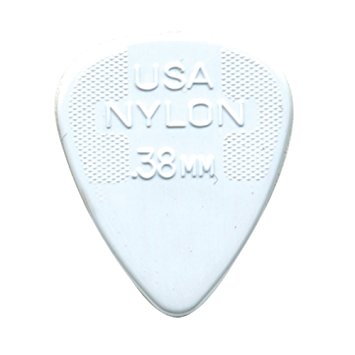I assume most of us grew up with the idea that shredding requires a stiff pick.
I blindly followed this idea until recently, after I heard that both Gilbert and Andy James play (or played) quite thin and bendy picks. AJ in particular mentioned that he picks quite heavy, so he benefits from a thinner pick (his new pick, however, is a 2.0mm).
Well since I’m also a heavy picker I wanted to give this idea a shot and played .73s for a few days - I have the impression they actually made my picking easier and faster!
Today I decided to try an extreme and grabbed a 0.58 gator pick - super bendy. I could “easily” play some one-way pickslanting licks at my top speed (about 200bpm 16th notes, for a short time). By easily I mean that it felt easier than the same lick played with a stiffer pick. Also, the pick seems to be slipping away much less, and it goes without saying that strumming becomes easier as well.
TRLD: if like me you like to pick hard and use a lot of pick on the string, you may give a shot to thinner picks, you may be surprised!
Obviously there are physical limitations to a bendy pick - but it seems to me they don’t really show up at “normal” shred speeds. Also, you obviously have a limit to the attack and volume, but this can be compensated by using more edge picking and/or picking deeper.
Let me know your opinions/experiences!

